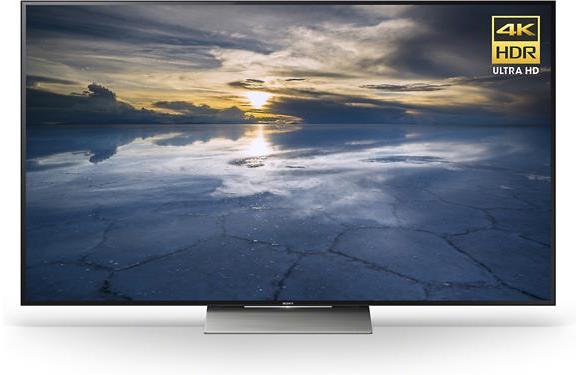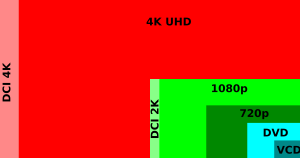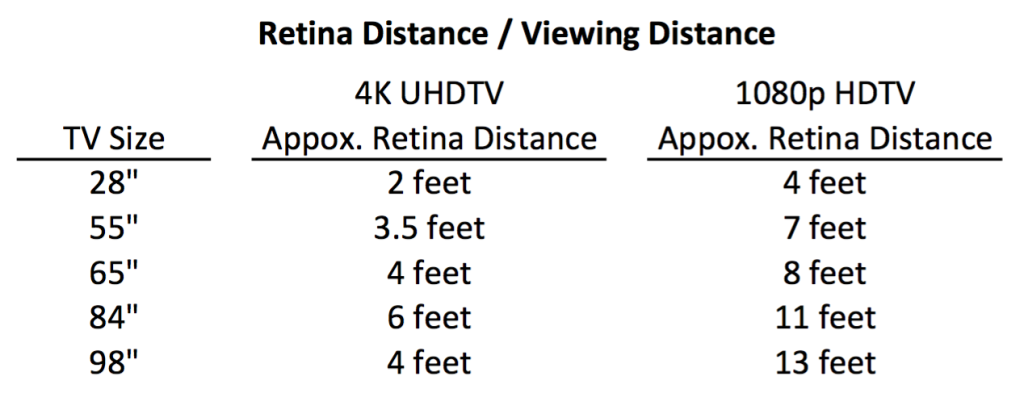
Believe it or not, this isn’t about encouraging you to buy a 4K TV. Its about arming you with the knowledge to make a decision either way. A nice 4K TV is great, but a good HDTV may still fit your needs. Here are some of the things that you need to know to understand whether a 4K TV is for you.
First lets look at the consumer TV screen resolutions. Resolutions are described in pixels, or the little coloured rectangles that make up TV images. 1080p HDTV resolution is 1920 horizontal by 1080 vertical pixels. This is usually simply denoted as 1920×1080. Doing the math, there are 2,073,600 pixels on a 1080p HDTV. Smaller TVs sometimes are 720p HDTV or 1280×720. Of course when TVs get larger, those tiny HDTV pixels start to get more noticeable (more on that in a bit). UHDTV 4K TVs  have a resolution of 3840 x 2160, or 4 times the resolution of 1080p HDTV. The ‘4K’ is named because of the approximate 4000 horizontal pixels (the movie projection industry’s DCI 4K resolution standard is actually 4K at 4096 x 2160, but let’s focus on the consumer standards). You can see that there are a lot more pixels of picture information in 4K TVs.
have a resolution of 3840 x 2160, or 4 times the resolution of 1080p HDTV. The ‘4K’ is named because of the approximate 4000 horizontal pixels (the movie projection industry’s DCI 4K resolution standard is actually 4K at 4096 x 2160, but let’s focus on the consumer standards). You can see that there are a lot more pixels of picture information in 4K TVs.
For smaller TVs, 1080p or 720p HDTV may be fine, as they are usually viewed far enough away that individual pixels aren’t noticed. Retina distance is the distance a typical person’s eye has to away from a screen to not pick out individual pixels. Since the trend and prices are moving towards affordable large TVs, HDTV pixels are starting to be noticed at average viewing distances. Below is a table of TV sizes and retina distances for 1080p HD and 4K TV. Using a 65” TV as an example, you may start seeing pixels when you are at 8 feet away from a 1080p HDTV, while you’d have to be 4 feet away for a 4K TV. You should consider this for your seating distance. For example, THX recommends that you should sit about 6 1/2 feet from a 65” TV to be immersed in the viewing experience. While perhaps aesthetics and not THX will decide your seating distance, its worth considering all the same.

There are some other terms that get pulled into the 4K discussion. While we’ve covered HDR or High Dynamic Range (deeper colour palette), what the heck is a Nit? A Nit is a unit of brightness that is used by TV manufactures. The idea is that a screen should reproduce all levels of luminance from pure black to daylight like images. Current 4K TVs are claiming to be able to reach 1000 Nits (pretty bright!) without sacrificing ability to show blacks that are close to black.
4K TVs prices are falling, and manufactures are adding great features like HDR to justify premium prices. Specs are one thing, but you need to balance out quality as well. A cheap 4K TV might be just that, cheap. Your money may be better spent on a good HDTV. Good 4K TVs have very nice pictures though, and they do a great job making ordinary HDTV content look good as well while we’re waiting for more 4K content.
